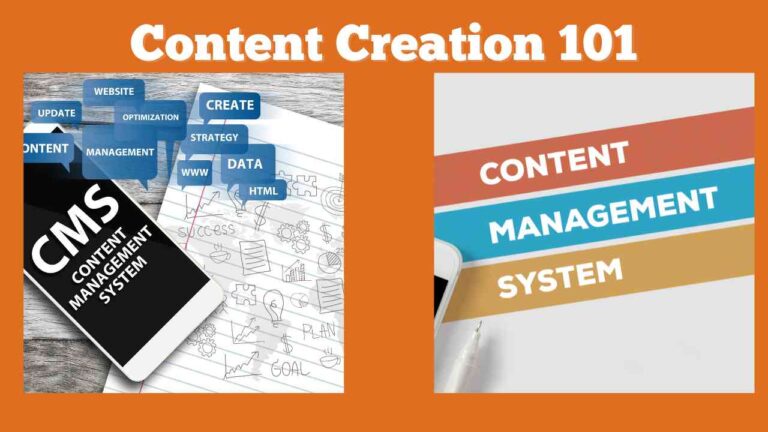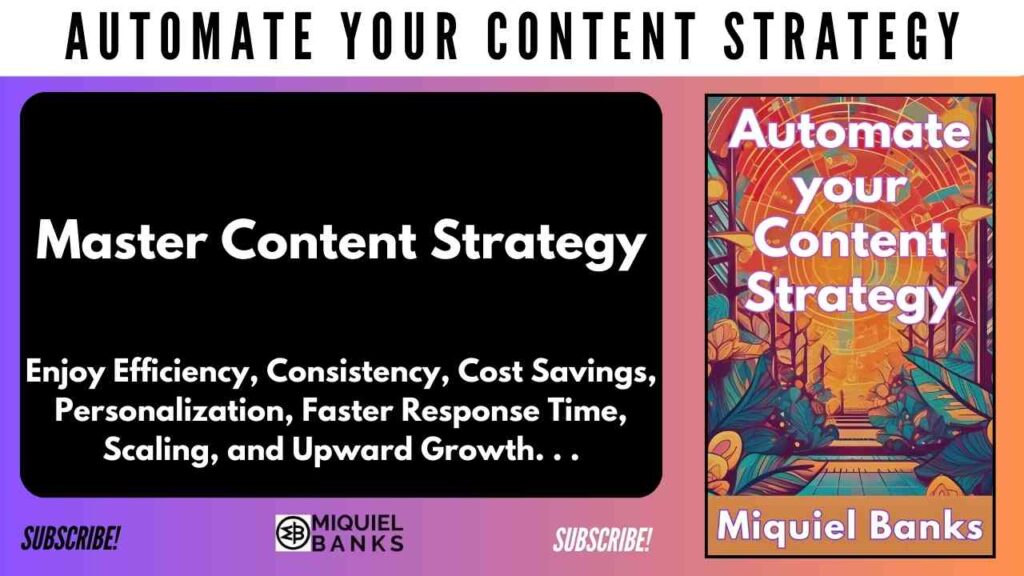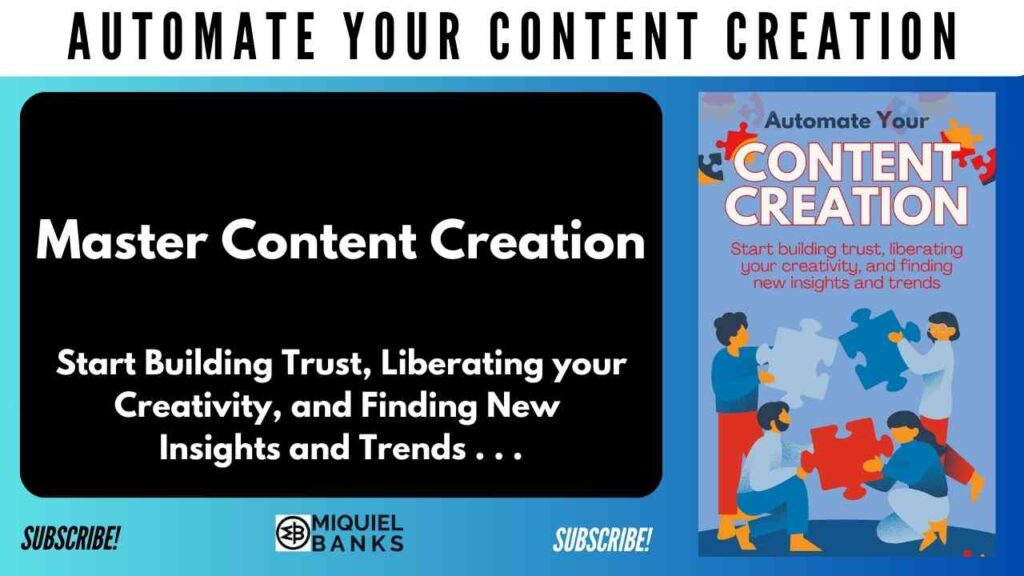Introduction
Content creation is a vital tool for small business owners striving for success in the competitive market landscape.
In a world driven by digital engagement and consumer interaction, the significance of producing compelling and valuable content cannot be overstated.
Content serves as the foundation for promoting businesses, cultivating brand identity, and engaging with potential customers on a personal level.
As we delve into the realm of content creation as a fundamental strategy for small business growth, we uncover the transformative power it holds in establishing a strong online presence and connecting with target audiences effectively.
Understanding the Importance of Content Creation
The Role of Content in a Successful Business
Content is the lifeblood of modern business strategy.
It’s the means through which a business communicates its values, showcases its expertise, and builds trust with its audience.
In a successful business, content acts as a bridge connecting the company to its consumers.
It informs, educates, and sometimes entertains, which in turn can influence buying decisions and brand loyalty.
By delivering consistent, high-quality content, you not only improve your visibility in search engine results but also position your business as a credible source in your industry.
This is crucial for small businesses looking to carve out a niche in a crowded market.
Quality content can lead to greater engagement on social media, increased website traffic, and ultimately, a more robust bottom line.
Every piece of content is an opportunity to reinforce your brand and to distinguish your business from competitors.
Why Your Business Needs a Solid Content Strategy
A solid content strategy is essential for guiding your business’s content creation efforts toward achieving specific goals.
It ensures that the content you produce is purposeful, targeting the needs and interests of your audience, and aligned with your brand’s objectives.
Without a strategy, content creation can become unfocused and inconsistent, which can dilute your brand message and impact.
A well-defined content strategy helps you to allocate resources efficiently, identify which types of content are most effective, and schedule your content for optimal impact.
It also provides a framework for measuring success and making necessary adjustments.
Essentially, a content strategy is your roadmap to connect with your audience in a meaningful way, drive engagement, and ultimately convert followers into loyal customers.
For small businesses, it is a competitive advantage that cannot be ignored.
Basics of Building a Content Creation Strategy
Identifying Your Target Audience
Understanding your target audience is the cornerstone of a successful content strategy.
Knowing who your audience is, what they care about, and how they consume content allows you to tailor your messages to resonate with them deeply.
Begin by gathering data on your current customers and market research to identify demographics, behaviors, and preferences.
Consider creating buyer personas—detailed profiles of your ideal customers—to guide your content creation.
Ask questions like:
- What problems are they trying to solve?
- What channels do they frequent?
- What kind of content do they engage with?
The answers to these questions will not only inform the topics you choose but also the tone, style, and delivery methods for your content.
By zeroing in on your target audience, you increase the relevance and impact of your content, making every piece more likely to capture interest and incite action.
Choosing the Right Content Types
Selecting the right types of content is crucial for engaging your target audience and achieving your marketing goals.
The content type should align with the interests of your audience and the strengths of your business.
Are your customers more inclined to watch videos or read blog posts?
Would they prefer in-depth guides or quick tips?
For instance, video content can be highly effective for demonstrating products or conveying brand personality, while articles and blog posts can establish thought leadership and improve SEO.
Infographics and visually appealing images can simplify complex information, making it shareable across social platforms.
Podcasts are rising in popularity for their convenience and personal touch.
By diversifying your content types, you not only cater to different preferences but also increase your reach.
Always consider the resources available to you; high-quality, relevant content matters more than trying to cover every possible format.
Diversifying Your Content
Diversification in content creation is akin to a balanced investment portfolio.
It’s about spreading your efforts across various content types and channels to maximize engagement and reduce risk.
The digital landscape is ever-changing, with audience preferences shifting and new platforms emerging.
By diversifying, you can ensure that you’re not putting all your eggs in one basket and that your message reaches a wider audience.
This strategy includes mixing up formats such as blogs, videos, podcasts, and social media posts, as well as experimenting with different content themes and storytelling techniques.
Additionally, consider the frequency and timing of content releases.
Diversifying your content also means adapting to trends without losing your brand’s voice and values.
It’s not just about quantity but also about the quality and relevance of the content you present to your audience.
Implementing and Refining Your Content Strategy
Creating a Content Calendar
A content calendar is an essential tool for implementing your content strategy effectively.
It serves as a visual workflow that helps you plan and organize upcoming content across different platforms.
By mapping out when and where each piece of content will be published, you can ensure a consistent and strategic approach to content delivery.
A content calendar aids in identifying key dates and events relevant to your audience, allowing you to create timely and topical content.
It also promotes team collaboration, as everyone has a clear understanding of the content pipeline.
When creating your calendar, include details such as the content’s topic, format, the channel of distribution, and responsible team member.
Remember to leave room for flexibility as opportunities or challenges arise.
Consistent use of a content calendar can lead to more organized, strategic, and stress-free content creation.
Measuring Your Content’s Success
To ensure that your content strategy is effective, you need to measure your content’s success.
Key performance indicators (KPIs) such as website traffic, engagement rates, conversion rates, and social media shares can provide insights into how your content is performing.
Analytics tools can track these metrics, showing you which pieces of content are resonating with your audience and which ones are not.
Look at trends over time to understand the long-term impact of your content strategy.
For example, an increase in website traffic may indicate that your SEO efforts are paying off, while high engagement rates on social media posts can suggest that your content is compelling and shareable.
Regularly reviewing these metrics will help you refine your content strategy by highlighting what to continue doing and what to adjust.
Remember, the success of your content is not just about numbers but also about the quality of the interactions and relationships you build with your audience.
Continually Improving Your Content Strategy
Improvement is a constant pursuit in content strategy.
The digital world evolves rapidly, and staying relevant means continuously refining your approach.
Gather feedback from your audience through surveys, comments, and direct interactions.
Listen to what they say and more importantly, understand what they don’t say.
Use this feedback to adapt your content, making it more engaging and valuable to your audience.
Monitor industry trends and competitor content to stay ahead of the curve.
Experiment with new content forms and marketing channels to see what works best for your brand. Additionally, keep learning and honing your skills in content creation and marketing.
Attend workshops, webinars, and other educational opportunities.
The goal is to create a loop of feedback, learning, and adaptation that keeps your content strategy moving forward and helps your business grow.
Remember, the only constant in digital marketing is change; embrace it.













